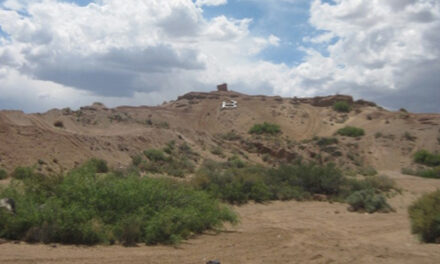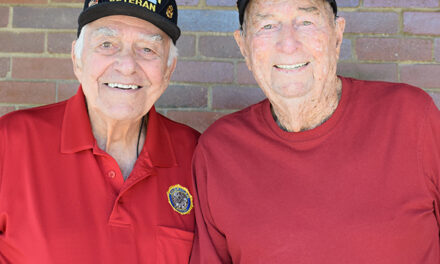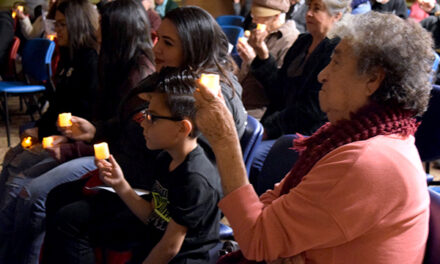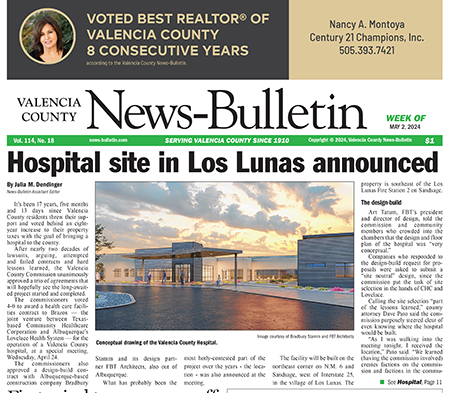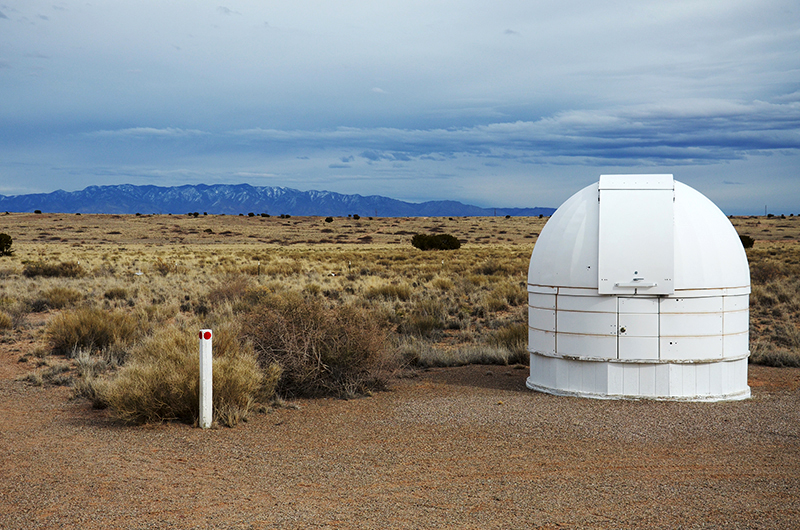
Jesse Jones | News-Bulletin photos
The imaging dome at the General Nathan Twining Observatory sits quietly with the Manzano Mountains in the background, waiting to document celestial objects.
In the heart of the west mesa just beyond the northern Socorro County line, a private astronomy observatory managed by a dedicated local astronomy club, is a haven for enthusiasts to explore the cosmos away from city lights.
The Albuquerque Astronomical Society (TAAS) is the astronomy group that owns and operates the General Nathan Twining Observatory (GNTO) out on the mesa, located eight miles south of the Belen Regional Airport.
TAAS is a local non-profit membership-only astronomy club that boasts more than 700 members. Open to anyone interested in astronomy, from beginners of any age, eager to grasp the basics to seasoned practitioners pushing the boundaries of the field, the club serves as a welcoming hub for all levels of enthusiasts.
The GNTO is a private observatory named after the U.S. Air Force Gen. Nathan Farragut Twining, a former chairman of the Joint Chiefs of Staff under President Dwight D. Eisenhower.
Twining was also involved in space exploration of sorts—In 1948, he established Project Sign or Project Saucer, an official U.S. government study of unidentified flying objects conducted by the United States Air Force, an early precursor to Project Bluebook.
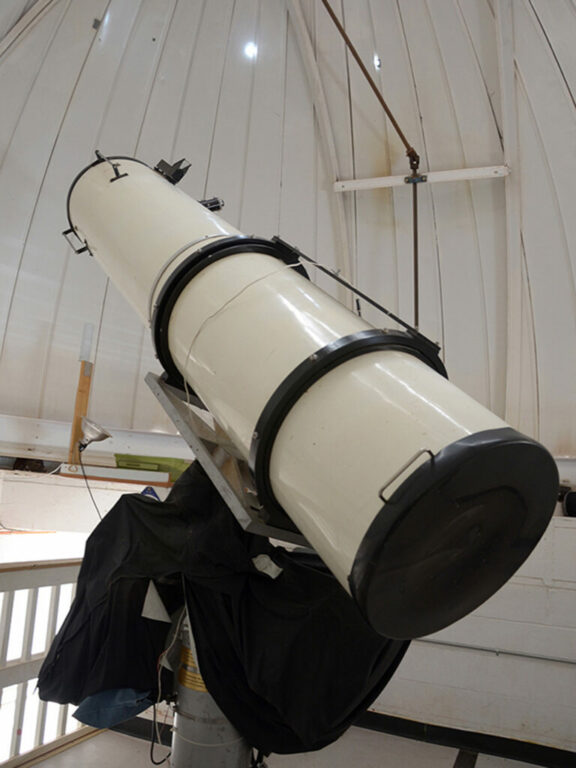
The Isengard telescope is a 16-inch f/6 Newtonian style telescope made by Cave-Astrola. It was donated by amateur astronomer Lt. Col. Bill Isengard UASF. It is housed in the main dome of the General Nathan Twining Observatory, south of Belen in Socorro County.
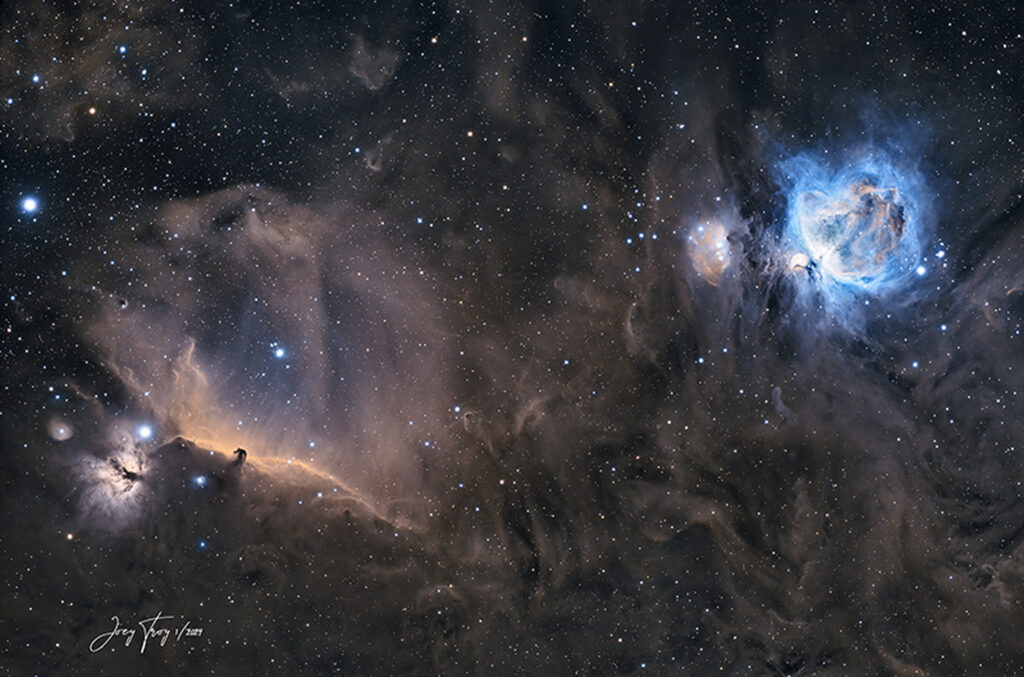
Photo courtesy of Joey Troy
This image is a widefield view of the Orion Constellation. On the upper right is the Orion Nebula (Messier 42). The Flame Nebula (NGC 2024) and the Horsehead Nebula (Barnard 33) Horse Head are in the lower left. Captured at the GNTO on Jan. 21, 2023.
In the early 1990s, TAAS erected the GNTO in response to a proposal made a decade earlier by retired Lt. Col. Bill Isengard, a passionate amateur astronomer and former member of the U.S. Air Force. Isengard pledged to donate his prized 16-inch telescope to the organization under the condition that they secure a dark location and construct a secure building to shelter the telescope.
In 1988, Nathan Twining Jr., the son of the famed general, learned about the pressing need for a site and generously donated four acres of land and $5,000 to the TAAS for the observatory. In 1990, fueled by donations from its members, construction commenced on the site. Remarkably, even the dome, repurposed from an old silo cap, was donated by one of the members.
“We can see the Milky Way very nicely from there,” said Jim Fordice, TAAS observatory director and retired U.S. Navy submarine officer. “You can see the light from, of course, Belen, Los Lunas and Albuquerque, but we still have a very good, nice dark sky for observing and (taking) images.”
On the observatory grounds, several buildings cater to the needs of the members. The centerpiece on the property is the main dome, which houses what the group simply calls the Isengard telescope — a mounted 16-inch f/6 Newtonian-style reflector telescope.
Other systems in place include various monitoring systems, including a weather
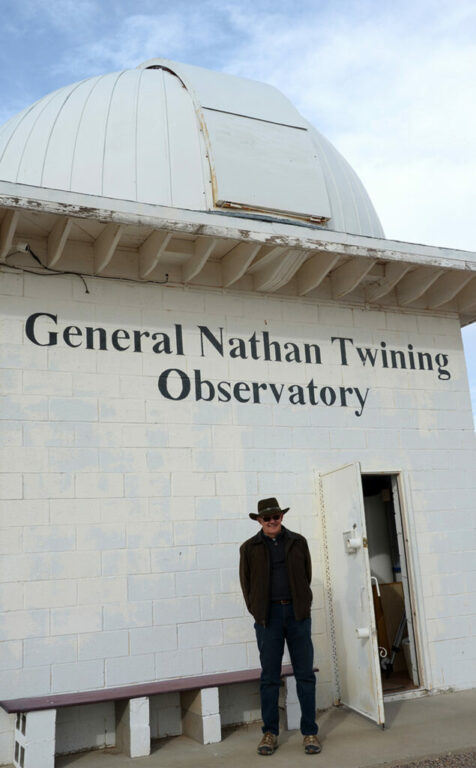
Jim Fordice, the director of the GNTO Observatory and board member of The Albuquerque Astronomical Society, stands in front of the main dome of the observatory.
monitoring system that tracks atmospheric conditions, a camera system dedicated to meteor detection and a scan quality meter system to gauge darkness levels and other environmental parameters.
A smaller imaging dome provides members with the capability to capture celestial phenomena in the night sky. Equipped with an integrated 14-inch imaging telescope, camera, and computer system, it offers enhanced imaging capabilities.
The facility also houses three mobile Dobsonian telescopes, which utilize reflecting technology with a concave collecting mirror at the rear of the telescope tube.
There is also a solar telescope available for use on one of the 22 observing pads. These pads are designated for members to set up their personal telescopes or the larger Dobsonians on concrete slabs.
In addition to the observatory facilities, there is a small bunkhouse and a kitchen affectionately named the Cocina Galactica by the group. Adjacent to the main buildings, there is a designated lecture area and a cozy picnic spot for members to enjoy outdoors.
The whole site is set up on a photovoltaic system — an electrical system that uses sunlight to generate electricity.
Those interested in becoming members have some good reasons to join, especially those beginners who want to purchase a telescope. Membership fees for joining the club are — regular membership costs $30 per year, while discounted plans are available for full-time educators and active military at $15 per year. Full-time students can join for just $5 per year.
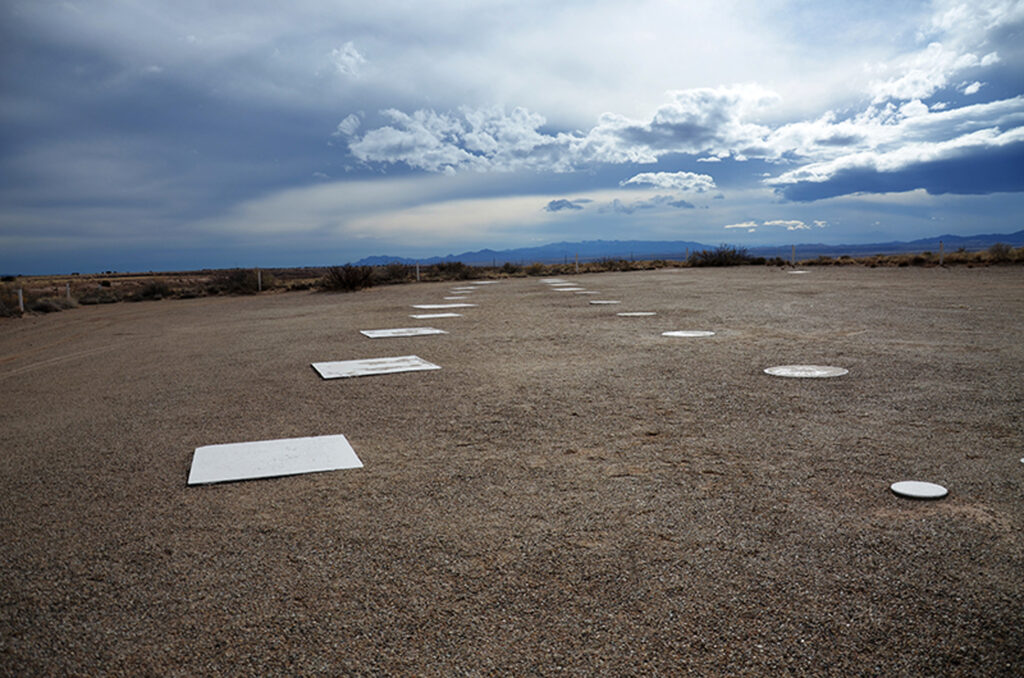
These 22 concrete pads make up the GNTO observing field. The pads are for group members to place their telescopes on for stable astro-viewing.
“One of our bigger selling points is the loan program because it allows people to come and join us and get started right away with a nice telescope and these telescope packages are good telescopes. They’re high quality,” said Fordice.
TAAS provides a telescope borrowing program for members to try out different models before making a purchase. The program allows members to explore different telescopes, facilitating informed decisions based on their specific interests and needs.
“If you want to look at the planets, you really want one kind of telescope but if you want to look at deep sky objects, you probably want to go a different direction,” said Fordice.
The group hosts two events monthly. One is a general meeting featuring presentations on various astronomical subjects. Before the meeting, they hold Astronomy 101, where attendees learn the fundamentals of astronomy, covering essential information to foster interest in the hobby.
The other events, open to the public, they call Star Parties.
Fordice says the club welcomes the public to attend Star Parties, where everyone brings their telescopes. During these events, the group guides attendees in observing celestial objects in the night sky.
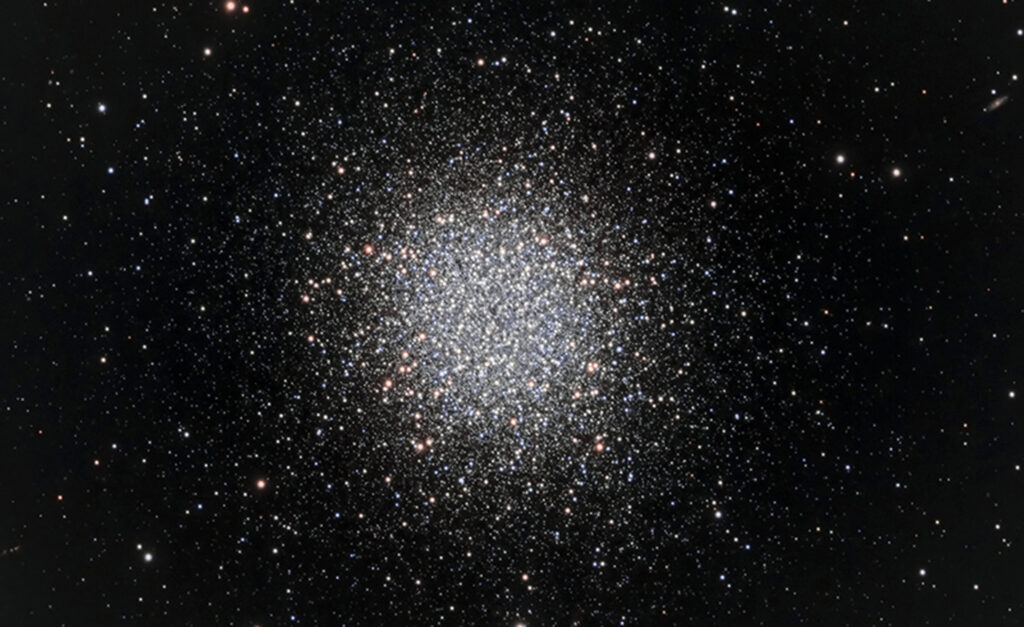
Photo courtesy of Jim Fordice
This image is of the globular cluster Messier 13 in the Hercules Constellation. M13 is sometimes called the Great Globular Cluster in Hercules. There are several thousand stars in the cluster. It is 145 lightyears in diameter and is 22,182 lightyears from the earth. Captured at GNTO on June 17, 2023.
When the GNTO was originally conceived and built, Fordice said the intention was to host school children at the observatory. However, logistical challenges arose as it proved impractical to transport children to the remote location, particularly due to the unmaintained dirt roads leading to the site.
Instead, the TAAS brings the planetarium experience directly to the schools. They utilize an inflatable planetarium, about 6 meters across, which they set up in gymnasiums or other spacious indoor facilities.
Although the observatory does not collaborate with other observatories, TAAS members have taken some amazing images of deep space at the GNTO. Many of the amateur astronomers in the group post their images on websites dedicated to astrophotography.
“From time to time, an amateur astronomer will find something new and we’ll check around the various sources to figure out if that object has ever been seen before and then they might be recognized as having found something new,” said Fordice. “It doesn’t happen often but I think at least one of our members has done that.”
To join or get more information about The Albuquerque Astronomical Society, visit their website, taas.org.
Jesse Jones lives in Albuquerque with his wife and son. Jesse graduated from of the University of New Mexico twice. This spring, he graduated with a degree in multimedia journalism and, in 2006, he received a bachelor’s degree in university studies with an emphasis in photojournalism. He is a current fellow of the New Mexico Local News Fund.

